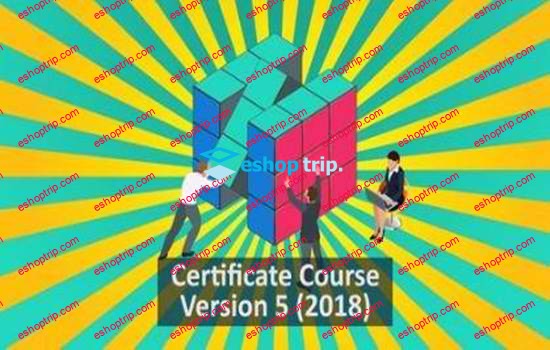Published 8/2024
MP4 | Video: h264, 1920×1080 | Audio: AAC, 44.1 KHz
Language: English | Size: 0.99 GB | Duration: 1h 42m
Learn how to create effective AI prompts with practical applications and ethical considerations.
What you’ll learn
Understanding the fundamentals of prompts, including their historical evolution and current applications.
Identify and create effective prompts with appropriate language, clear context, and high specificity.
Design prompts for various scenarios such as customer service, educational tools, and creative content generation.
Use advanced techniques and tools to develop and manage prompts while taking ethical implications into account.
Requirements
Basic understanding of artificial intelligence and its applications.
Previous experience or familiarity with interactive technologies such as chatbots and virtual assistants is beneficial but not mandatory.
Description
In the digital age, mastering the art of prompts is more crucial than ever. This course, “Mastering Prompts in the Digital Age,” is designed to equip you with the knowledge and skills necessary to effectively harness the power of prompts. Whether you are a content creator, educator, or customer service professional, understanding how to create, manage, and use prompts can significantly enhance your interactions with AI technologies. Our journey begins with a comprehensive introduction to prompts. We will delve into the fundamental notion of what a prompt is, exploring its different types ranging from text to voice. Additionally, you will discover the history and evolution of prompts, tracing their origins and observing how they have developed over time. Understanding the historical context will allow you to appreciate the advancements we have today and how they can be applied in modern scenarios.As we progress, we will focus on the components that make prompts effective. You will learn the importance of language and tone, recognizing when to use formal or informal language based on the context. We will discuss the necessity of clarity and conciseness in your prompts to avoid ambiguities and improve user understanding. Furthermore, the course will emphasize the significance of contextual information, guiding you on how to provide the necessary basic details to make your prompts more relevant and effective.In Module 3, we will take a closer look at designing prompts for different scenarios. From customer service to educational tools, you will learn to tailor your prompts to meet various needs. For example, you will understand how to design prompts that effectively handle common customer service issues or create scenarios that support tutoring and homework assistance. Additionally, we will venture into creative content generation, offering techniques for creating prompts for stories and generating ideas for blogs and articles.As you advance, you will be introduced to advanced prompting techniques. This includes adaptive prompting, where you customize prompts based on user inputs and context, learning to dynamically adjust according to user responses. You will also explore multimodal prompts that combine text with images, audio, or video to enrich user interaction. These advanced techniques will enable you to create more sophisticated and engaging prompts.Understanding the tools and platforms available is crucial for applying what you have learned. In Module 5, you will get an overview of popular platforms like OpenAI’s GPT, Google Dialogflow, and Microsoft Bot Framework. We will cover how to use APIs to integrate prompts into applications and manage responses programmatically. This module will ensure you are well-equipped to apply your skills in real-world scenarios using the latest technologies.Finally, no course on AI and prompts would be complete without addressing ethical considerations. We will tackle important issues such as biases in AI, how to identify and mitigate these biases to ensure fairness and inclusivity. Furthermore, the course will cover privacy and security concerns, touching on user data management and regulatory compliance to ensure your implementations adhere to ethical standards.By the end of this course, you will have a well-rounded understanding of prompts, equipped with theoretical knowledge and practical skills to apply in various contexts. This course aims to make you proficient in creating and managing prompts that are effective, engaging, and ethical.
Overview
Section 1: Introduction
Lecture 1 Welcome
Lecture 2 Course objective
Lecture 3 Table of Contents
Lecture 4 Content
Lecture 5 The importance of mastering prompts in the digital age
Lecture 6 Course Overview
Section 2: Module 1
Lecture 7 Understand Prompts
Lecture 8 What is a Prompt?
Lecture 9 Definition
Lecture 10 History and evolution
Lecture 11 First uses of prompts
Lecture 12 Different types of prompts (text, voice, etc.)
Lecture 13 Current Applications
Lecture 14 Development over time
Lecture 15 AI and machine learning
Lecture 16 Chatbots and virtual assistants
Lecture 17 Service client et support
Section 3: Module 2
Lecture 18 Components of Effective Prompts
Lecture 19 Strategies for Effective Language and Tone
Lecture 20 Formal vs. informal
Lecture 21 Clarity and conciseness
Lecture 22 Context
Lecture 23 Situation setup
Lecture 24 Provide the necessary basic information
Lecture 25 Specificity
Lecture 26 Precision in questions or commands
Lecture 27 Avoid ambiguities
Section 4: Module 3
Lecture 28 Prompt Design for Different Scenarios
Lecture 29 Customer Service
Lecture 30 Management of Common Issues
Lecture 31 Efficient escalation
Lecture 32 Educational Tools
Lecture 33 Help with homework
Lecture 34 Tutoring Scenarios
Lecture 35 Creative Writing and Content Generation
Lecture 36 Story prompts
Lecture 37 Content Ideas for Blogs and Articles
Section 5: Module 4
Lecture 38 Advanced Prompt Techniques
Lecture 39 Adaptive Prompting
Lecture 40 Personalization and user context
Lecture 41 Dynamic adjustment based on user input
Lecture 42 Multimodal Prompts
Lecture 43 Combine text with images, audio, or video
Lecture 44 Enhanced user interaction
Section 6: Module 5
Lecture 45 Tools and Platforms
Lecture 46 Overview of Popular Platforms
Lecture 47 GPT from OpenAI
Lecture 48 Google Dialogflow & Microsoft Bot Framework
Lecture 49 Using APIs for Prompts
Lecture 50 Integrating prompts into applications
Lecture 51 Manage responses programmatically
Section 7: Module 6
Lecture 52 Ethical Considerations
Lecture 53 Bias and Fairness
Lecture 54 Ensuring inclusivity
Lecture 55 Identify and mitigate biases
Lecture 56 Confidentiality and Security
Lecture 57 User data management
Lecture 58 Regulatory Compliance
Section 8: Conclusion
Lecture 59 Conclusion
Content creators, educators and customer service professionals looking to improve their prompt engineering skills.,AI enthusiasts and developers wishing to deepen their knowledge in the creation and effective use of prompts.
Homepage










